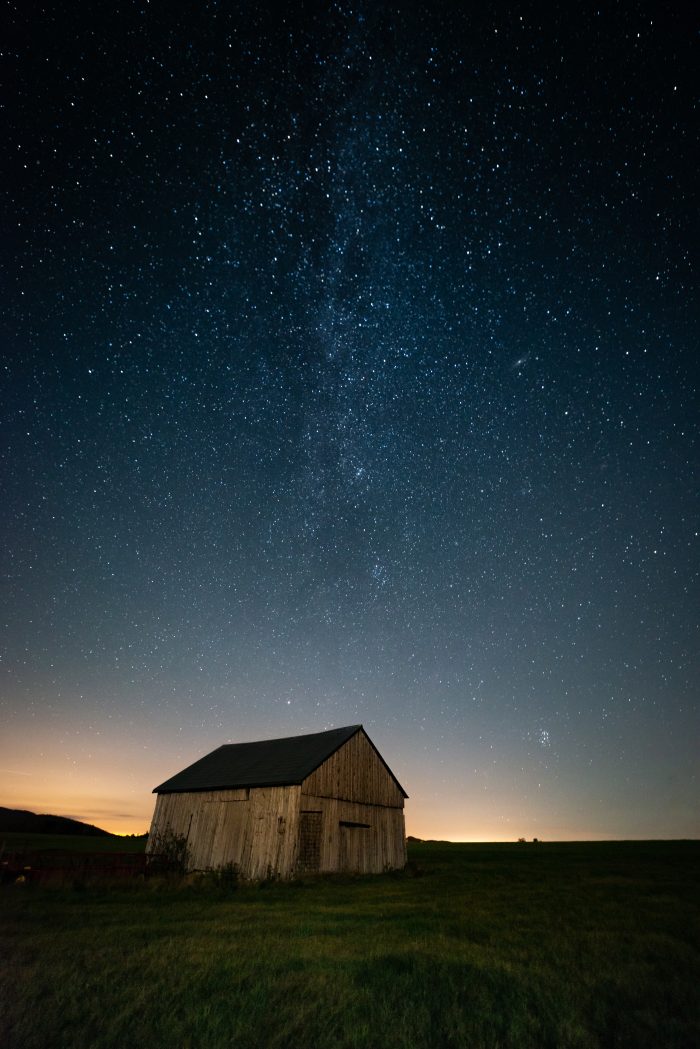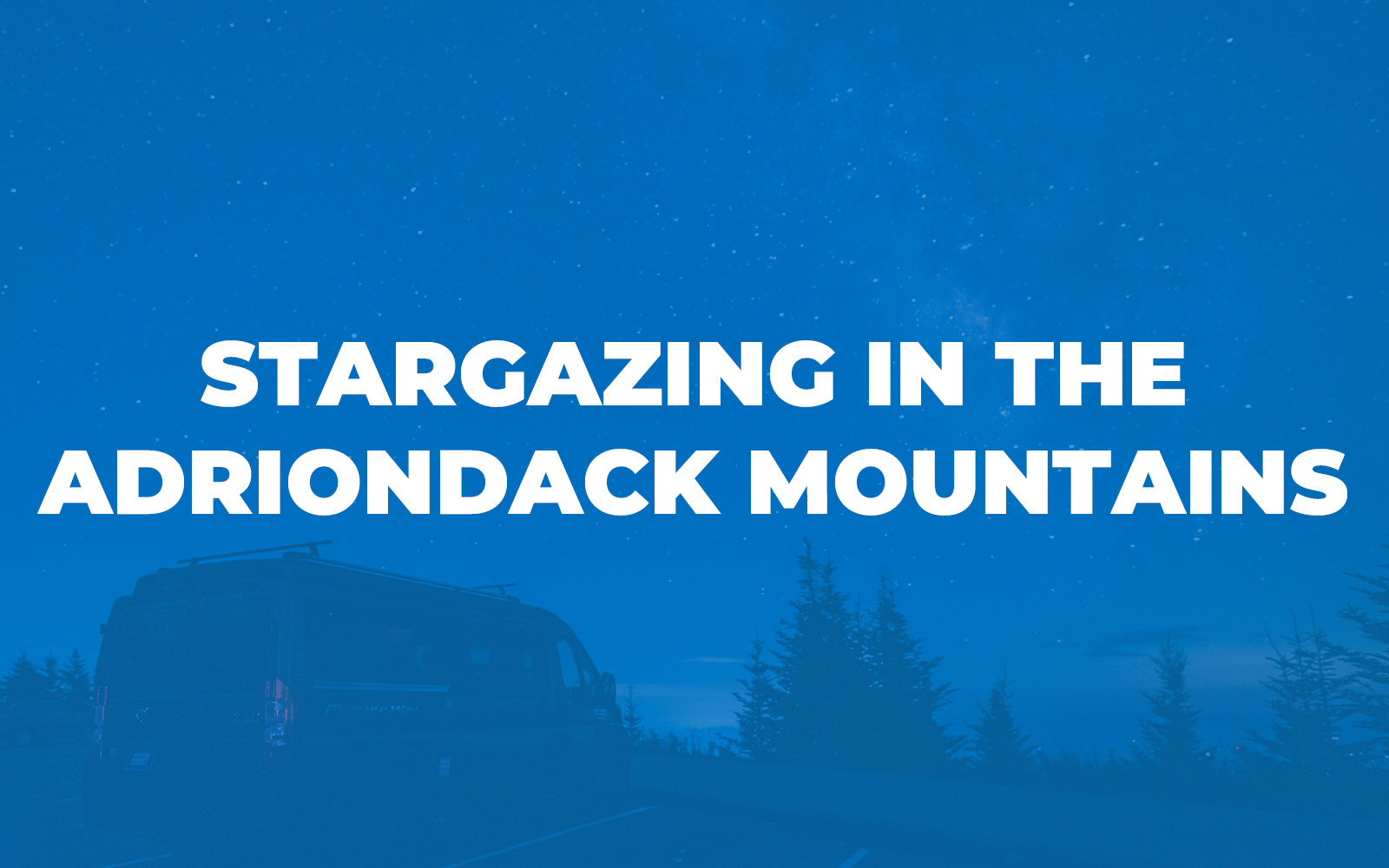
By: Scott Krycia
The Adirondack Mountains are a perfect place to escape from everyday life and relax under the night sky and take some amazing photos of the milky way. Here are my tips for stargazing so you can start your own astronomy adventure.
Stargazing is not just looking up at the sky and seeing stars. It’s also enjoying the night sky in all its glory–including planets, comets, meteors and other things that are out there beyond Earth’s atmosphere. To find a good spot for stargazing, you’ll want to head away from the city lights.
To start to find any dark skies nearby, use this map (and click on “Dark Sky”): https://wwwdarkskyfinderorg/search-for-dark-skies/. It will tell you what kind of light pollution is present in your area–the darker it is on this map, the better your chances are at seeing stars.
When you look at an image of the United States at night and the Adirondacks stand out as a black hole. Much of the Adirondack Park is classified as a 2 on the Bortle Scale. This is a nine-level numeric scale that measures the night sky’s brightness. The scale ranges from Class 1, the darkest skies available on Earth, through Class 9, inner-city skies. The Milky Way becomes visible at 3 or 4 on the Bortle scale at night with no moon.
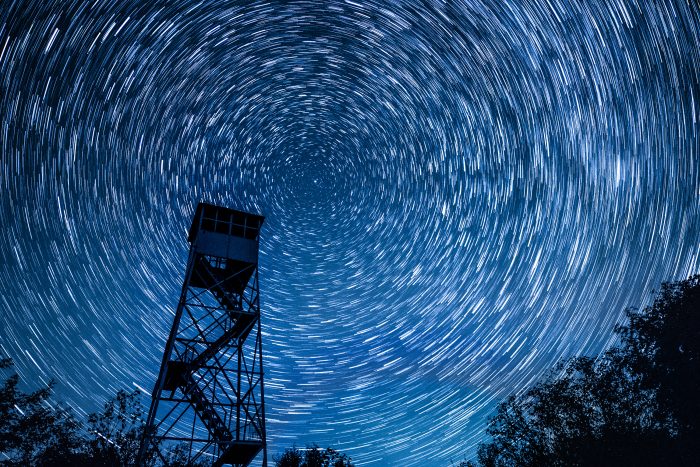
The Best Times to Stargaze
The best time to go stargazing is in the summer, because you have more hours to look at the sky. In addition, it’s easier to see constellations and other celestial objects during this season. The Milky Way is most visible from July through September (and especially August). Perseid meteor shower activity peaks around mid-August each year; however there are some other minor showers throughout June through October too.
The Galactic core of the Milky Way (the center with the most stars and nebulae) is visible half of the year or less. The other half is located beneath the horizon. In the winter months (December – February) it is not visible at all because it’s too close to the sun. In the spring (March – May), it will first become visible a few hours before sunrise. By June it will rise much earlier before midnight. The summer months (June – August) are generally the best viewing time because it will be up most of the night. By fall (September – November) the milky way will be best seen in the evening, before it sets. To get the best view, you’ll want to find a location that doesn’t have any major cities in the southeast or southwest directions. Even if the sky above you is dark, the light pollution from a nearby city can still impact your view if it’s located to the south.
What to Bring on the Trip
When planning a star gazing trip, it is important to bring necessary equipment and supplies.
- Telescope or Binoculars: A telescope or binoculars can enhance your stargazing experience by allowing you to see celestial objects in greater detail.
- Star Chart App: A star chart app or planisphere can help you identify stars, constellations, and planets in the night sky.
- Red Flashlight: A red flashlight can help you see in the dark without affecting your night vision.
- Warm Clothing: Temperatures can drop significantly at night, so it is important to bring warm clothing such as jackets, hats, gloves, and boots.
- Blanket or Chair: A blanket or chair can provide a comfortable place to sit or lie down while stargazing.
- Snacks and Drinks: Bringing snacks and drinks can help you stay energized and hydrated during your stargazing trip.
- Insect Repellent: Bugs can be a nuisance at night, so it is important to bring insect repellent to keep them at bay.
- First Aid Kit: A first aid kit can come in handy in case of any injuries or emergencies.
- Spare Headlamp or Flashlight: An absolute necessity.
- Camera or Smartphone: A camera or smartphone can be used to capture photos of the night sky and your stargazing experience.
- Map and Compass: If you are exploring a new area, it is important to bring a map and compass to help navigate the terrain. Remember you may not have cell service!
By being prepared and bringing these essential items, you can have a comfortable and enjoyable stargazing experience.
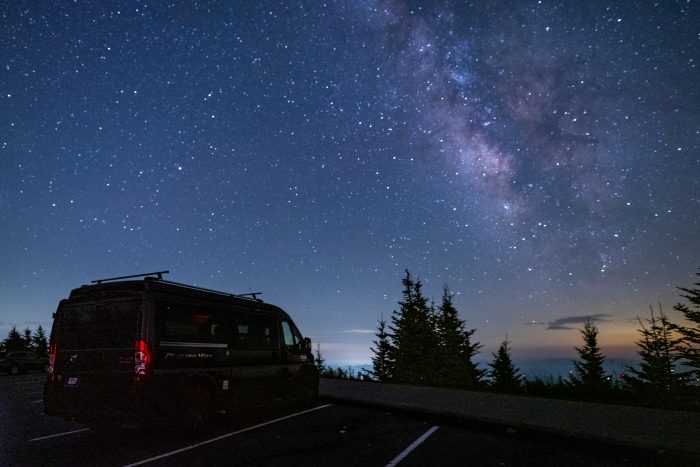
Suggestions for Night Sky Photography
Here are some helpful tips for shooting the night sky and capturing the Milky Way:
- Find a dark location away from light pollution.
- Use a tripod to keep your camera steady.
- Use a wide-angle lens to capture as much of the sky as possible.
- Use a high ISO setting to capture more light, but be aware of noise.
- Use a long exposure time, anywhere from 15 seconds to 30 seconds or longer, depending on your camera and lens. Any exposure time of over 30 seconds will cause the foreground of your image to blur. Increase your ISO to keep your exposure time in the 15 to 30 second range.
- Use manual focus and focus on infinity to ensure that stars are sharp.
- Experiment with different white balance settings to get the desired color temperature.
- Use a remote shutter release or self-timer to avoid camera shake.
- Practice and be patient – capturing the Milky Way can take some trial and error.
My Favourite Places to View the Night Sky
If you’re looking for a place to stargaze, the central High Peaks area of the Adirondacks has several options worth considering. One of the best places to view the night sky is at Duck Hole, which is a small pond and marshy area located in the Five Ponds Wilderness Area. The area has been designated as a National Natural Landmark and is home to many different species of plants and animals, making it a great spot for nature lovers as well as stargazers.
Henderson Lake is another great option for stargazing, and it’s easily accessible from the trailhead. The lake is located within the Five Ponds Wilderness Area, and it provides stunning views of the surrounding mountains. The lake is also a popular spot for fishing and camping, so you can combine your stargazing with a fun outdoor adventure.
Belfry Mountain is a popular destination for hiking and stargazing in the Adirondacks. The mountain is located in the northeastern part of the Adirondack Park, near Lake George, New York. It is known for its historic fire tower, which has been restored and is open to the public.
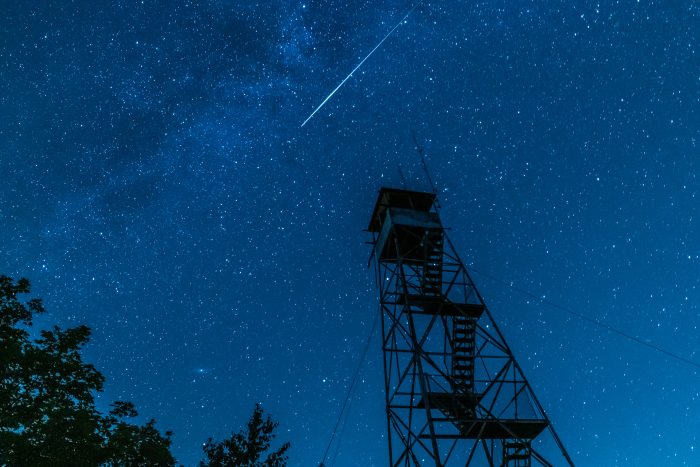
The fire tower offers a unique vantage point for stargazing, as it provides a 360-degree view of the surrounding landscape. Visitors can climb to the top of the tower and enjoy unobstructed views of the night sky, including the stars, planets, and constellations. The summit also offers panoramic views of the surrounding mountains and valleys, making it a popular spot for photography.
Azure Mountain is located in the Adirondacks in Saranac Lake, New York. It is known for its sweeping views of the Adirondack Mountains and the St. Lawrence Valley, and it’s restored fire tower. It is a popular destination for stargazing due to its low light pollution, low humidity, and high altitude, which provide nearly ideal conditions for night sky viewing. The Friends of Azure Mountain sometimes have a volunteer interpreter on the summit to answer questions in summer months. It is a short but steep climb, and is a great place for a picnic.
Indian Head Mountain is another popular stargazing destination in the Adirondacks. It is located near the town of Keene Valley, New York, and offers stunning views of the surrounding mountains and valleys. The mountain is known for its dark skies and is a popular destination for stargazers. It is easily accessible via a short hike of about 1.7 miles, which leads to an open summit with unobstructed views of the night sky. The summit is also a popular spot for photographers due to its panoramic views and dramatic rock formations.
Stillwater Reservoir is located in the western Adirondacks of New York State. It is a man-made reservoir created in the 1940s as part of a hydroelectric project. The reservoir is surrounded by wilderness and is known for its remote and secluded location, making it an excellent spot for stargazing.
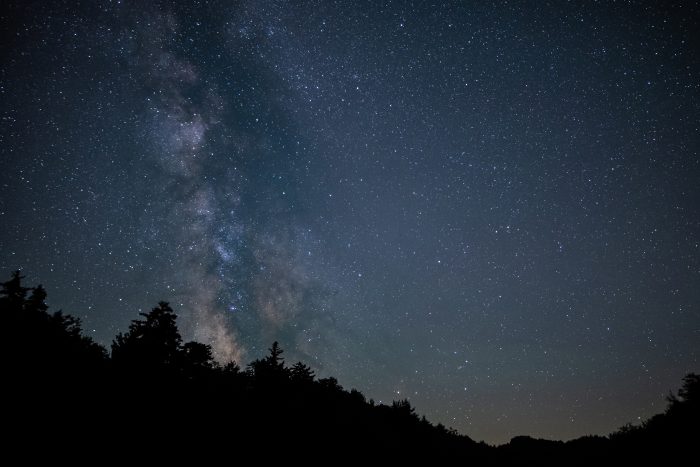
The reservoir is situated in a designated wilderness area with low light pollution, which provides an ideal environment for viewing the night sky. Visitors can expect to see a wide variety of stars and constellations, as well as the Milky Way Galaxy on clear nights.
In addition to stargazing, Stillwater Reservoir offers a variety of recreational activities such as camping, fishing, and boating. Several campsites are located along the reservoir, which can be reserved in advance. It is important to note that the remote location and lack of amenities at Stillwater Reservoir may require visitors to come prepared with their own supplies, including food, water, and camping gear.
Boondocking & Campgrounds
There are numerous boondocking and campground locations in the Adirondacks, including many free campsites. Among the popular camping spots are Mason Lake in Speculator, the Saranac Lake Islands, Moose Pond, and Tioga Point. The Adirondack Region boasts of over 6 million acres of protected natural area that offer unique camping, hiking, fishing, and kayaking opportunities.It is important to note that boondocking in the Adirondacks requires proper planning and preparation as facilities such as electricity, water, and waste disposal may be limited. Online resources such as Campendium, FreeCampsites.net, and USFS.gov provide detailed information on boondocking locations within the Adirondacks.
In conclusion, if you’re looking for a place to stargaze, Adirondack has several excellent options to choose from. Whether you’re an experienced stargazer or just starting out, these spots offer a chance to reconnect with nature and appreciate the beauty of the night sky.
